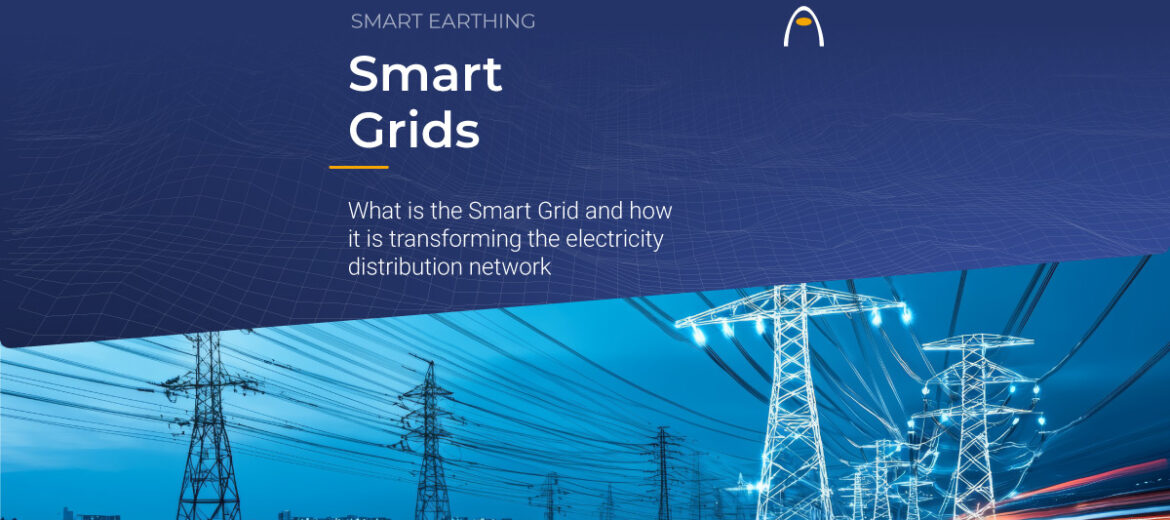In an increasingly interconnected world with a growing demand for energy, traditional power grids have become obsolete. The need for more efficient, sustainable and resilient energy systems has led to the emergence of smart grids. These innovative infrastructures, which integrate information and communication technologies (ICT), promise to radically transform how we produce, distribute and consume electricity.
What is a Smart Grid?
A smart grid is a bidirectional electrical network that allows energy to flow both from producers to consumers and vice versa. Thanks to the integration of digital technologies, sensors and advanced control systems, these grids offer more efficient and flexible energy management.
In addition to bidirectionality, which allows energy to flow in both directions (which facilitates the integration of renewable energies), the most outstanding features of smart grids include the automation of generation, distribution and consumption processes, which improves the efficiency and reliability of the grid. Also, real-time monitoring, thanks to sensors and control systems, allows constant surveillance of the state of the grid, facilitating the detection and rapid resolution of problems. Finally, advanced communication between the different elements of the grid, from generators to end consumers, ensures smooth and efficient interaction.
Origin and popularisation of the concept
Despite its relatively recent popularisation, the smart grid concept is not new. Its roots can be traced back to early research into the automation of electrical systems in the mid-20th century. However, it was in the 1990s that the term began to expand, driven by growing concern about climate change and the need to develop more sustainable energy systems¹.
An important milestone in the history of smart grids was the 2003 energy crisis in the United States, which left millions of people without electricity. This event catalysed the acceleration in developing smarter, more resilient power grids. In 2007, the term smart grid was consolidated with the passage of the Energy Independence and Security Act of 2007, which promoted grid modernisation to reduce dependence on fossil fuels and improve energy efficiency². This is one of the first appearances of the concept in a text.
Importance of Smart Grids in today’s industrial context
In the current industrial context, where efficiency and sustainability are top priorities, smart grids play a key role. One of their main benefits is greater efficiency in energy production and distribution, which reduces losses and improves the quality of supply³. In addition, the deployment of these smart grids facilitates, as we have noted previously, the integration of renewable energies, such as solar and wind, into the power grid, which is crucial for moving towards a more sustainable future that is less dependent on fossil fuels, as a major player in the process of decarbonization of industry⁴.
Another important aspect is the increased reliability offered by these networks. Thanks to real-time monitoring and automation, operators can quickly detect and resolve problems, reducing the risk of supply interruptions. They are vital, moreover, for the execution of predictive maintenance called to extend the life cycle of industrial assets more efficiently and with significant cost savings⁵.
The role of Smart Grids in the electrification of the electricity distribution sector.
Advances in smart grids enable better management of distributed energy resources, optimising energy flow and improving grid responsiveness and resilience. Digitisation facilitates real-time monitoring and predictive analytics, which not only improves operational efficiency but also enables grid operators to anticipate failures and fluctuations in demand 6.
Technologies such as smart meters and local flexibility markets allow consumers to actively participate in the energy market, driving a shift towards more decentralised and sustainable grids 7. In addition, incorporating simulation and data analytics tools allows operators a better planning of grid maintenance and expansion, optimising resources and reducing costs 8.
Challenges and prospects of the Smart Grid
Despite their multiple benefits, the large-scale implementation of smart grids presents several challenges. These include the need for significant investments, interoperability between different systems and cybersecurity¹⁰.
However, prospects are promising. Advances in information and communication technologies, coupled with growing awareness of the importance of sustainability, will drive the adoption of smart grids in the coming years. According to a report by the International Energy Agency (IEA), investments in smart grids are expected to increase significantly over the next decade, especially in regions such as Europe and North America¹⁰.
Towards a Smarter Energy Future: Smart Grids in Technology Applications
Smart grids represent a revolution in the energy sector, offering an innovative and sustainable solution to today’s energy challenges. Their large-scale implementation will allow building a more efficient, flexible and resilient energy system, contributing to the transition towards a more sustainable future. As we move towards Industry 4.0, smart grids are positioned as a key pillar in achieving a balance between energy demand and environmental protection.
If you would like to learn more about Aplicaciones Tecnológicas S.A.’s approach to smart grids, you can do so through this link.
References
- International Renewable Energy Agency (IRENA). Publicaciones sobre tendencias globales en energías renovables. Disponible en: https://www.irena.org/
- Energy Independence and Security Act of 2007. Disponible en: https://www.gpo.gov/fdsys/pkg/STATUTE-121/pdf/STATUTE-121-Pg1492.pdf
- European Commission – Digitalisation of the energy system. Disponible en: https://energy.ec.europa.eu/topics/energy-systems-integration/digitalisation-energy-system_en
- International Energy Agency (IEA). Informes sobre el panorama energético global y las perspectivas futuras. Disponible en: https://www.iea.org/
- Gartner. Informes sobre tendencias tecnológicas en el sector energético. Disponible en: https://www.gartner.com/
- U.S. Energy Information Administration (EIA). Datos y análisis sobre el sector energético a nivel mundial. Disponible en: https://www.eia.gov/
- IRENA (International Renewable Energy Agency). Publicaciones sobre la integración de energías renovables en las redes eléctricas. Disponible en: https://www.irena.org/
- European Commission – Smart Grids. Disponible en: https://energy.ec.europa.eu/topics/energy-systems-integration/smart-grids_en
- Gartner. Informes sobre seguridad cibernética en el sector energético. Disponible en: https://www.gartner.com/
- International Energy Agency (IEA). Informes sobre inversiones en redes inteligentes. Disponible en: https://www.iea.org/



